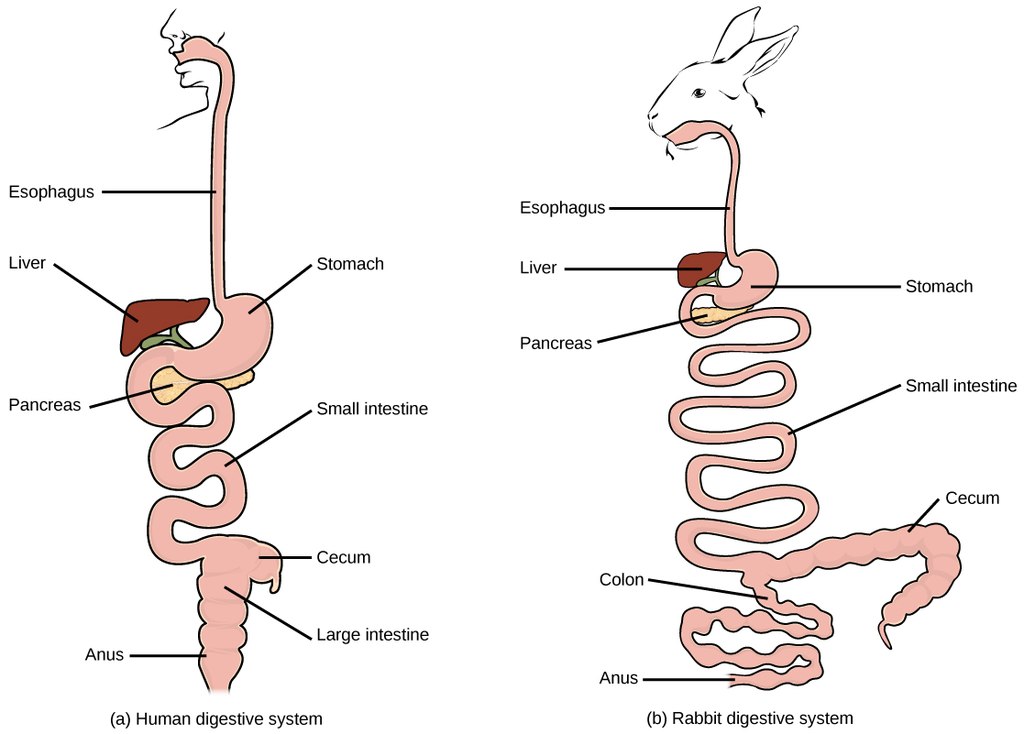- Home
- Rabbit Health Basics
Rabbit Health Basics
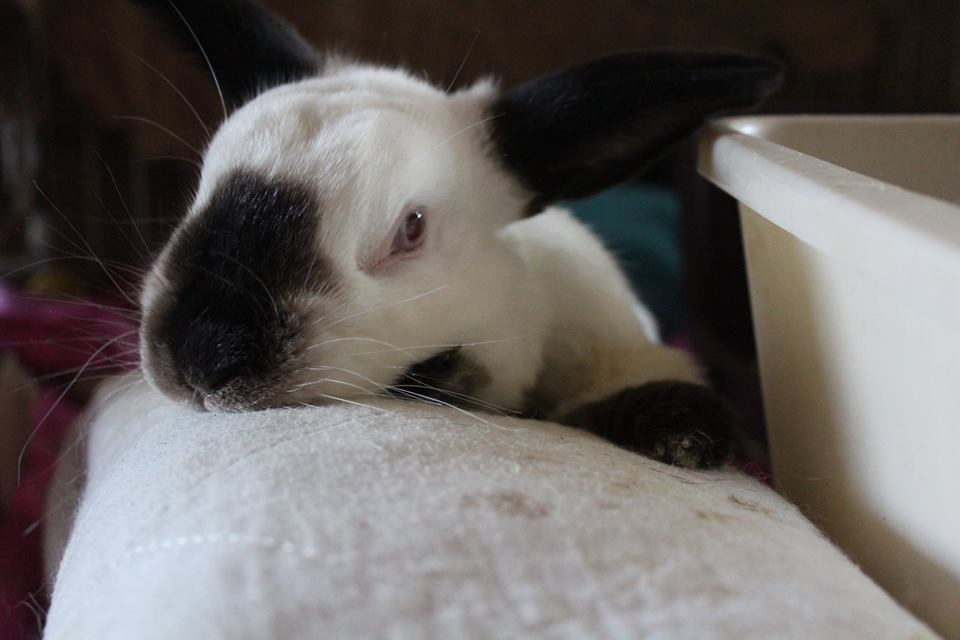 Slimmy on his pillow.
Slimmy on his pillow.Photo by Dustin Yoder
The information presented is for educational purposes only and does not substitute veterinarian care. This information should not be used for diagnostic purposes, for treatment of an illness or injury and never should be substituted for veterinarian care by a licensed veterinary practitioner. The Educated Rabbit cannot be held responsible for the accuracy of the information contained, nor be held responsible for any action, based on information found in The Educated Rabbit.
Seek advice from your veterinary professional for any rabbit health issues and before administering any drugs!
Keeping Your Bunny Healthy
Rabbit health basics can be narrowed down to good diet, housing and interaction from the owner. Decent diet and housing can minimize many potential health issues and a good bond with your pet insures your rabbit gets prompt medical care when needed.
Many people, especially those who are used to caring for a dog and cat, may not realize how different a rabbit can be to care for when it comes to health. This is because rabbits are herbivores verses dogs and cats who are carnivores. In fact, those who have experience caring for horses - another herbivore - may recognize many similarities, as the two animals have much the same digestive needs and issues, despite the size difference.
Important! A rabbit should always be pooping and eating. If your rabbit hasn't done one or both within 12 hours, this is a medical emergency!
Rabbit Health Basics #1 - It Starts With Food
A good diet is so important to a rabbit's health. If you study our human digestive system, you know that most of our food gets broken down in the stomach and small intestine. Rabbits are hindgut fermenters, which means that the majority of the digestion takes place in the large intestine and cecum. The cecum is the largest organ in the rabbit's abdomen, taking up 40-60% of the total volume of the gastrointestinal tract (Rees Davis and Rees Davis, 2003). This is where the digestible plant material is further broken down by bacteria. A diet high in sugars (e.g., lots of fruit, carrots and pellets) and protein (such as alfalfa), plus low in fiber (short indigestible plant fiber) will upset the balance of good and bad bacteria in the cecum. This imbalance can ultimately slow the gut down and become catastrophic if not addressed promptly. A proper diet will avoid many gut-related issues.
It's important for rabbit owners to understand the difference between our stomachs verses a rabbit's stomach. Issues such as a stomach ache or skipped meal are typically not life-threatening to us, but can be for a rabbit. As herbivores, they should be eating almost all the time. If a rabbit refuses to eat, there is something seriously wrong and if not addressed quickly, the situation will become fatal.
A rabbit can stop eating for a number of health reasons (such as dental issues or a severe infection), which I will talk about later in the section. However, bad diet doesn't have to be one of them, and the best news, you have complete control over what your bunny should be eating.
Rabbit Health Basics #2 - Home Sweet Home
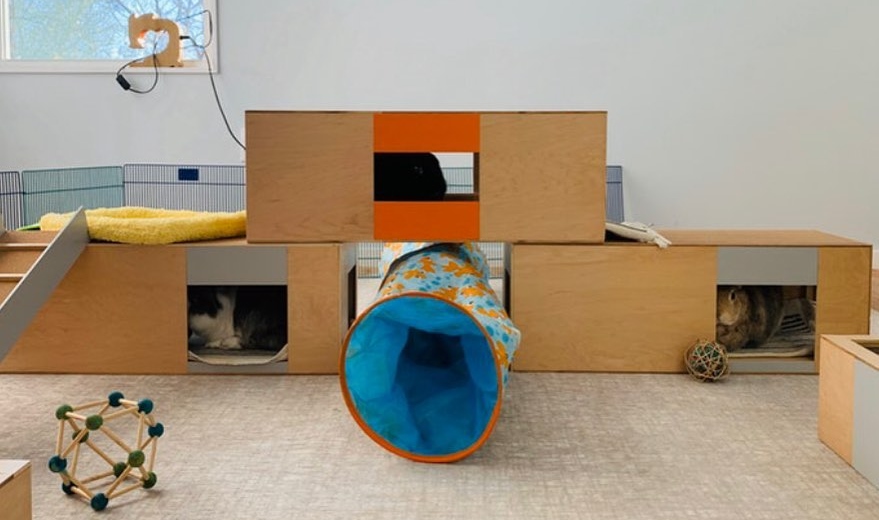 Rabbit Room
Rabbit Room
Photo by Britta Menges
Safe housing and frequent interaction can reduce the risk of serious health issues, such as obesity, sore hocks and flystrike.
Owners need to provide enrichment, as well as give their pets the opportunity to explore outside of the pen. Rotating toys and allowing bunnies to race up and down hallways and check out what's behind the couch are all ways for an indoor rabbit to get some exercise. Regular exercise and exploration will also limit any unwanted behaviors due to boredom and frustration.
Although diabetes is something rabbits don't have to worry about, obesity can lead to other life-threatening conditions. Sometimes inadequate housing can become a major contributor.
Sore hocks frequently occur if a rabbit is overweight or standing on wire-bottom flooring. This sort of flooring makes cage cleaning easy for the caretaker, but can damage the feet. Because there is no padding on the bottom of rabbit feet - only skin and fur - improper flooring can cause problems. The feet may develop open sores and become infected. If left untreated, the infection may enter the bones. At this point, the foot - or maybe the entire leg - may need to be amputated.
Obesity and keeping your rabbits outdoors can also contribute to flystrike. Flystrike is when flies lay eggs on a rabbit. The eggs hatch and the maggots begin to burrow into the rabbit to feed. The toxins released by the maggots kill the host, so it is essential a vet sees the rabbit as soon as maggots are detected. This is an emergency!
Keep your disabled or high-risk rabbit (arthritic, hind-end weakness, etc.) inside your house. Yes, flystrike can happen to an indoor bunny. After all, it just takes one fly. However, it is easier to keep flies away from an indoor rabbit than an outdoor bun. Keeping your overweight or disabled bunny clean and dry (more in the senior and special needs section) will also be essential.
Rabbit Health Basics #3 - Love Your Buns
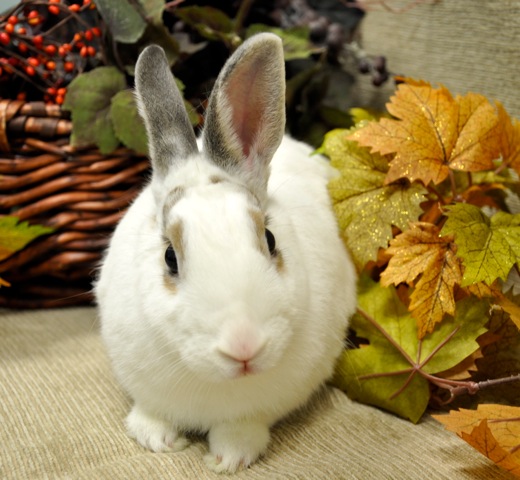 Mindy
MindyPhoto by Kristina Driskill taken at BunnyLuv Rabbit Resource Center.
Rabbits are generally considered high maintenance pets by those who are familiar with them. Having owned both dogs and rabbits, I would agree with the above statement. For me, rabbits are high maintenance due to the fact you always have to be watching them - making sure they are always eating and pooping. You don't need a bodyguard to watch them 24/7, but you take a big risk if you decide to dump a sack of hay in your bunny's pen and take off for the weekend. Boarding your bunny at a facility that knows how to take care of rabbits or asking a trusted friend to watch over him is essential to keep everyone - and every bunny - happy.
Remember, eating and pooping (or the lack of it) will be your first clue something isn't right, but each bunny is an individual. My first two boys, Whoppy and Oso, were usually not in a big rush to eat dinner. I would put down the plate, and they would continue with their nap. That was typical for them. Usually, they would start eating their veggies within the hour or two. Joey is so desperate for the food, he grunts and lunges at the plate. When I feed hay, Panda jumps into the litter box, stands up and starts moving her jaw in anticipation. Cupcake and Sprinkles make sure they are in the litter box and ready. Poppy likes to throw her pellet dish around. All of these observations are because I have spent enough time to get to know them, their likes, dislikes and habits, so if they start to act differently, I know immediately.
The better you know your bunny and all of his quirks, the sooner you will be able to tell if your bunny is sick and get him the help he needs.
Available Now!
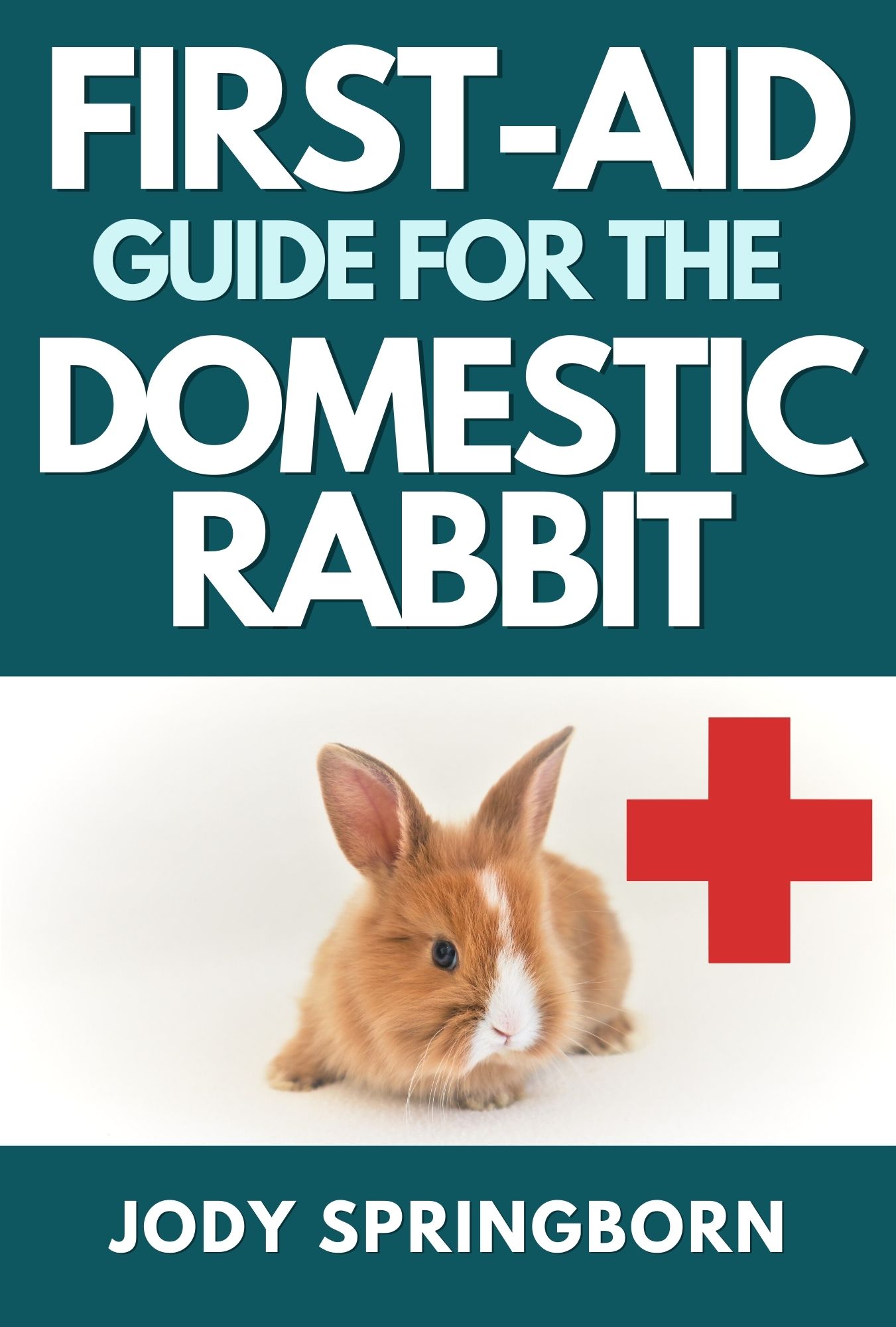
Often times, rabbit health issues require immediate attention. My First Aid Guide for the Domestic Rabbit will show you the most common health issues and teach you the basic skills you should have when your bunny needs you the most. There are over 100 color photos that show you all the supplies you need and how to help your rabbit in easy to follow step-by-step instructions.
Further Reading
Rees Davis, R., Rees Davis, J.A.E., 2003. Rabbit gastrointestinal physiology. Veterinary Clinics: Exotic Animal Practice. Vol.6 Issue 1. 139-153. https://doi.org/10.1016/S1094-9194(02)00024-5
